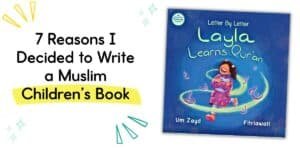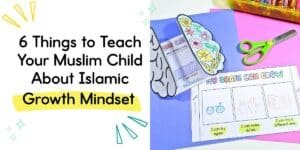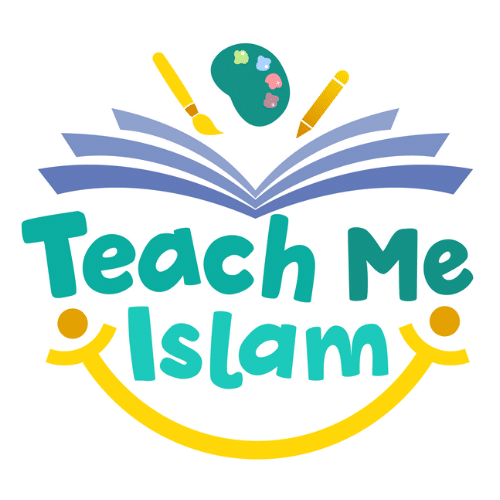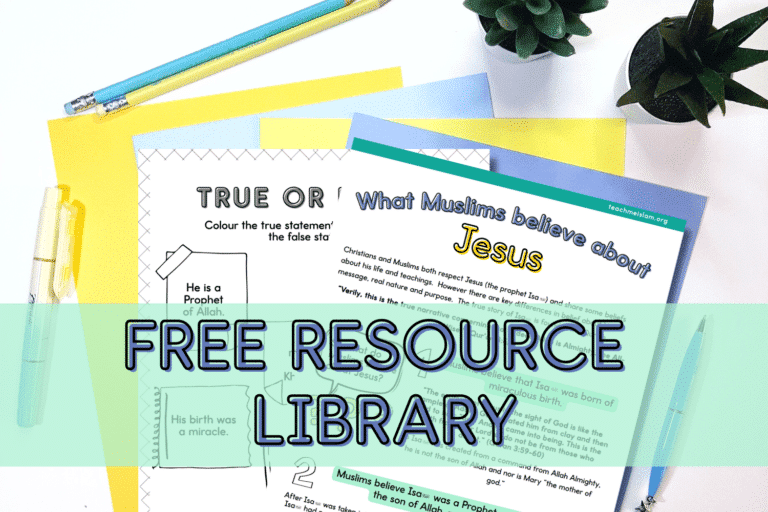The Hijri calendar isn’t just about marking Eid or Ramadan—it’s connected to all kinds of Islamic obligations like prayer, zakat, hajj, and more. It also helps kids connect to the ummah, understand the Seerah, and seek out special times of reward like the four sacred months.
But how do we actually connect our kids to the Hijri calendar when sometimes the Gregorian calendar seems like the main calendar and the Hijri one feels like the ‘extra’ or ‘other’ one?
(Even though Allah created the 12 months of the Hijri calendar when He created the heavens and the earth — Surah At-Tawbah 9:36.)
Here are five easy and meaningful ways to bring the Hijri calendar into your child’s everyday life inshaAllah:
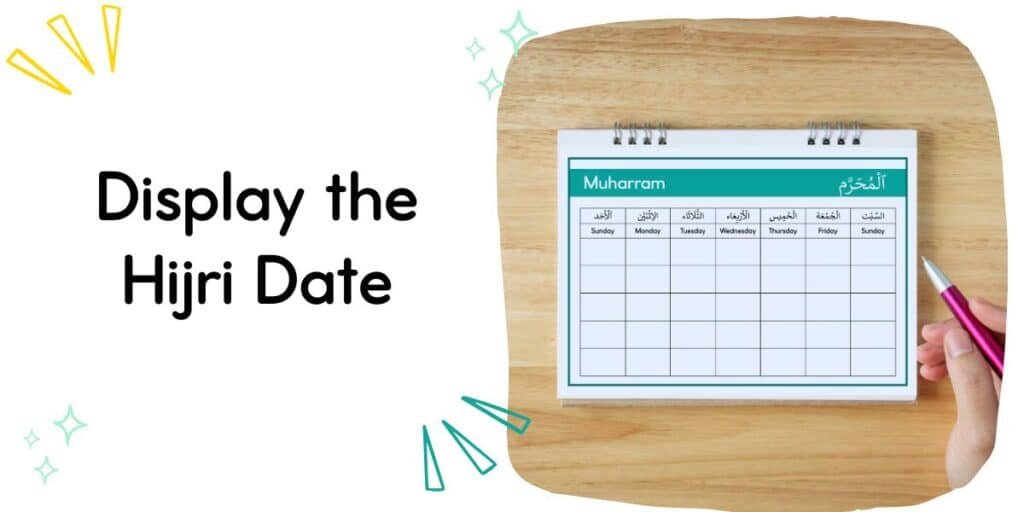
1. Display the Hijri Date Prominently at Home
Children learn from what they see daily. Hang a Hijri calendar in a high-traffic area—like your kitchen, homeschool space, or their bedroom. Better yet, use a calendar that includes significant Islamic dates (like Ashura, Arafah, and the start of Ramadan) to spark conversations throughout the month.
If you’re feeling creative, make a Hijri calendar together. Kids really engage with what feels personal. That’s why they learn how to recognize and spell their own names and those of their friends before many other common words.
Tip: Use a simple whiteboard or printable date card that your child can update daily. Let them be “calendar monitor” for the day or week!

2. Help Them Discover Their Hijri Date of Birth & Age
Another way to make it personal is to show your child when they were born in the Hijri calendar! Let them look up not only their date of birth but also their age in Hijri years. Kids usually love this because they’re a little older in the Hijri calendar.
It’s a rite of Muslim parenthood to have your child inform everyone:
“Actually, I’m not 6—in the Hijri calendar, I’m 7!”
I created this free tool for you and your kids to calculate your Hijri date of birth and age. Visit it here:
🔗 teachmeislam.org/hijri-date
Share it with friends and family too!

3. Talk About Upcoming Dates & Events
Use the Hijri calendar to build anticipation for meaningful days like Ramadan, Eid, or the first 10 days of Dhul-Hijjah.
Some of these moments come up naturally—like the inevitable question:
“When’s the next Eid?” (usually asked the day after Eid!)
That’s a great time to explain that the dates of the two Eids are fixed—1st Shawwal and 10th Dhul-Hijjah—but since the months vary in length, the exact number of days until the next Eid changes.
Other times, we’ll need to be a bit more intentional as parents. Try the classic parenting tactics like…
- Wondering out loud: “I wonder when the White Days are this month… Let me check.”
- Acting unsure: “Not entirely sure if this is one of the sacred months—can you find out for me?”
- Bringing it up at dinner: “Pass the sauce please… we’d better finish our fasts—Shawwal is almost over!”
You get the idea. Bring it up regularly and in different contexts to help reinforce the importance of the Hijri calendar.
Honestly, this will likely help you too, inshaAllah. Even living in Saudi, where the Hijri calendar is more present in daily life, it’s still easy to lose track. Alhamdulillah, just like so many things we try to teach our kids, they end up reminding us—and benefiting us too (maybe more than them!).
4. Write the Hijri Date on Their Schoolwork
This one’s mainly for the homeschoolers! But even if you don’t homeschool, it’s a great habit.
Encourage your child to write the Hijri date alongside the Gregorian one on their worksheets, notebooks, or journals. It’s a simple way to reinforce their connection to the Islamic calendar—without needing a whole lesson.
For younger kids, use stickers or stamps for the Hijri month, or trace the date together.
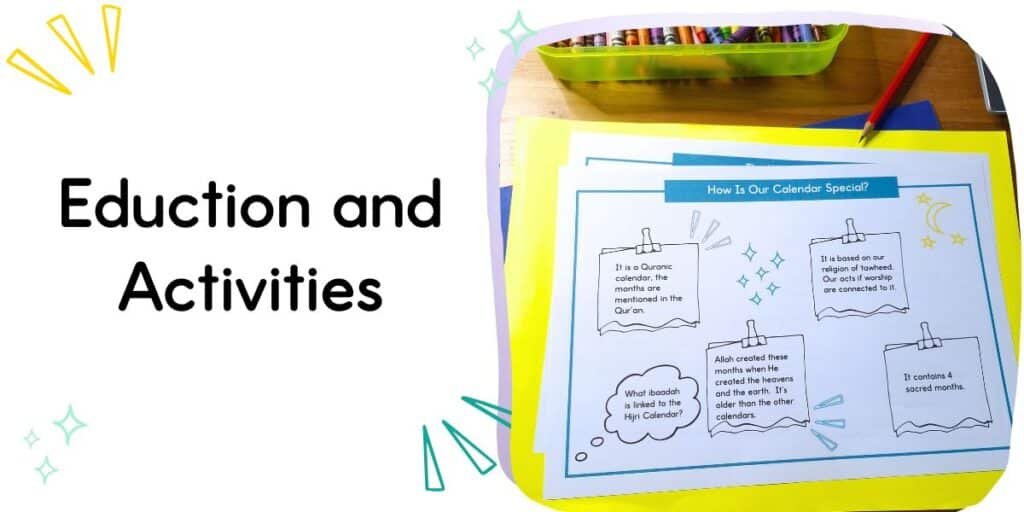
5. Make the Calendar Come Alive with Learning and Activities
Kids are amazingly efficient learners; they focus on what they perceive as important, so they learn best when the content feels relevant to them. If the Hijri calendar is just a list of unfamiliar months or dates they only hear during Ramadan, it won’t mean much. But once they understand why it matters, they’re far more likely to connect with it.
Educational research backs this up:
Studies show that children remember information better when it’s connected to themselves. This is known as the self-reference effect—the idea that we learn best when we see how something relates to us.
📚 One study published in Frontiers in Psychology found that children as young as three remembered words better when they were linked to themselves in some way.
👉 Read the study here
That’s why educating your child first—and then engaging in hands-on activities—is so powerful. It turns the Hijri calendar from something abstract into something your child feels personally connected to.
Try things like:
- Creating a Hijri scrapbook with drawings or facts for each month
- Reading the Seerah and noting the months and dates mentioned
- Colouring in the moon phases each night
- Making a mini-book about their Hijri birth month
If you’d like a done-for-you unit designed to teach your child all about the Hijri calendar, check out my popular resource on Etsy, Teachers Pay Teachers, or in the website shop.
Final Thoughts
Connecting your child to the Hijri calendar doesn’t require big changes—it’s about building small, meaningful habits over time. The more familiar they become with the months and their significance, the more naturally it will become part of their lives.
There is so much ‘ibaadah tied to the Hijri calendar. All the pillars of Islam are connected to it in some way, and so many Sunnah acts too—like fasting on the White Days, Arafah, Ashura, the six days of Shawwal, and more.
If your children grow up connected to the Hijri calendar, you’re facilitating their path to worship, alhamdulillah.
And honestly, isn’t that what our role as parents is really all about?
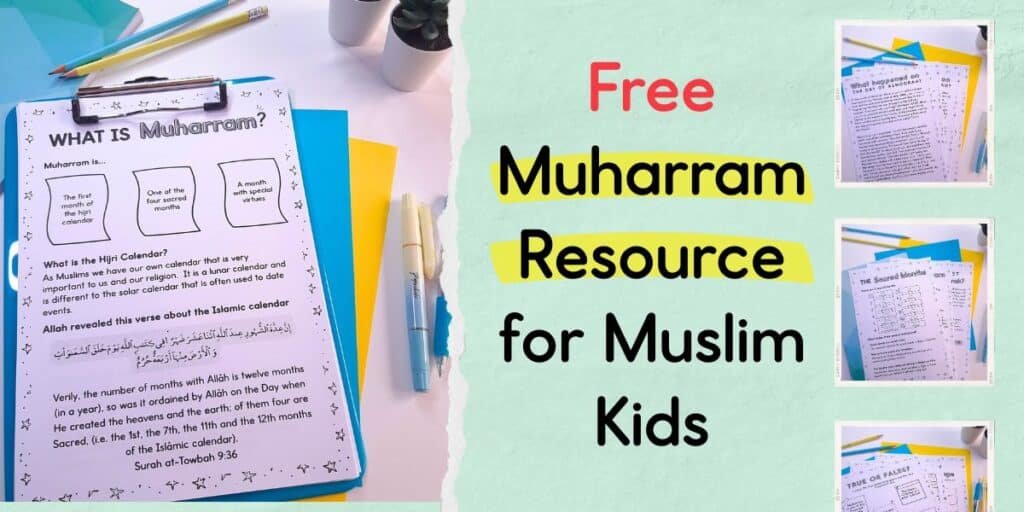
Free Resources to Help You Teach Kids About Islam
I hope you’ve found these tips for instilling Islamic principles into your child’s education helpful!
If you’d like a free resource to teach your child all about Muhrram, join the mailing list to download a fun activity pack about this sacred month and get access to the full free resource library.
🔗 Click here to join and download your free pack
You may also enjoy these blog posts:


